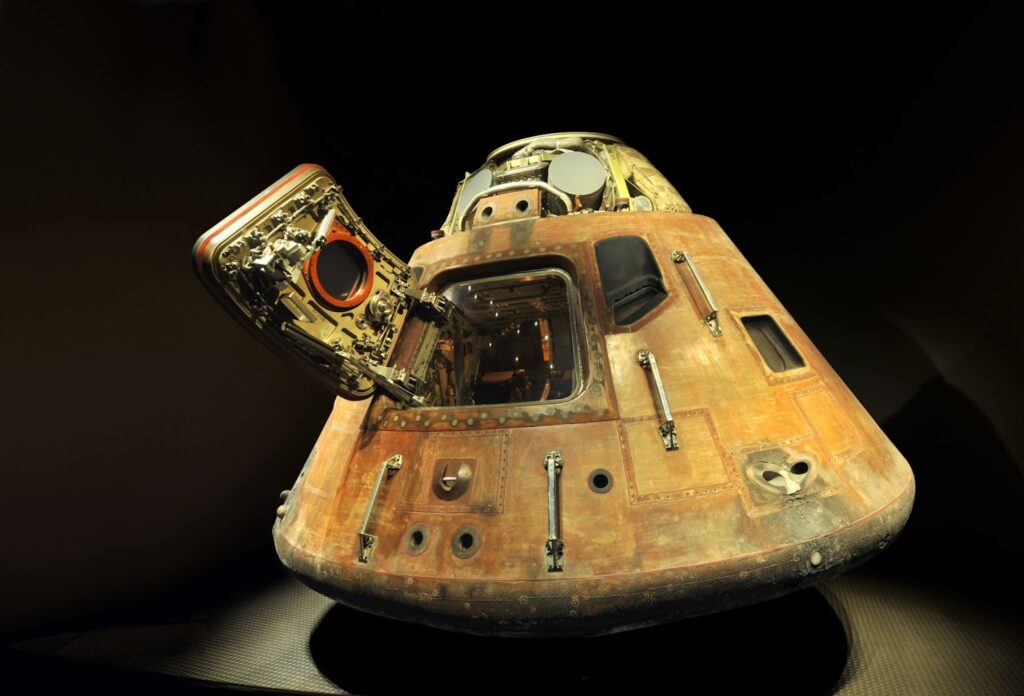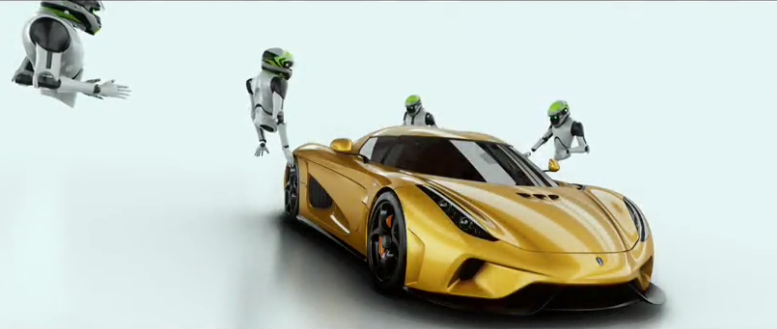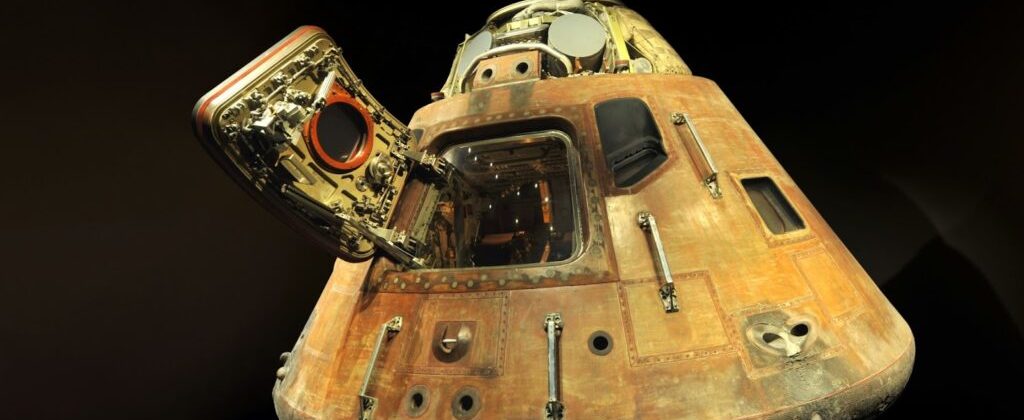April 13th 1970: The Apollo 13 spacecraft is 220,000 kilometres from Earth when an explosion rocks the crew and tears off one of the two oxygen tanks from the spacecraft. The blast destroyed one side of the transport, not only removing the oxygen supply from the crew but also water and some electrical systems. This disaster echoed across the world as astronaut Jack Swigert radioed to NASA control, “Houston, we’ve had a problem here.”

From that moment, engineers and scientists at NASA rushed to put their heads together to find a solution to Apollo’s problem. The engineers needed to solve the issue using what the Apollo crew would have to hand, but crucially, without physically seeing the damage firsthand. In the end, the fix was simple; NASA instructed the crew to use cardboard, plastic bags and tape to patch up the craft enough to get them home.
There’s not much NASA could have done at the time to foresee the issue; building several spacecraft to stress test every possible outcome would have burned through budgets swiftly. When the Apollo 13 disaster occurred, NASA engineers could no longer rely on their original designs, as the craft had failed due to an unforeseen hostile environment. The crew in Houston needed a model on Earth that directly mirrored the craft in space.
The Digital Twin
In 2002, NASA coined the term ‘digital twin’, though the original concept is a little older. A digital twin can be described as ‘a digital copy of a physical object: mechanism, building or concept based in reality’. For example, a car manufacturer may create a digital twin of their main assembly plant and use it to implement new safety protocols or install new machinery, by first trying it within a digital safe zone.
Healthcare professionals can use digital twinning to simulate rare illnesses and practice care first hand – albeit digitally – and learn the correct techniques. Planning departments in government can replicate dense population areas of cities to see how new infrastructure will impact the city and society. Environmentalists are simulating extremes of climate change on digital twins based on rainforests and oceans.
A digital twin is a living model of something physical, which, to metaverse aspirers will sound familiar. Digital twins are becoming much more popular and with the advent of more immersive technology – Augmented Reality (AR) and Virtual Reality (VR) – the concept of digital twinning is becoming more mainstream. Not only that, but it points to where the metaverse can aid industry and where digital twinning can benefit from creating the metaverse.
The Impact
To fully realise a digital twin of a location or person, sensors can be placed in the physical space to gauge temperature, humidity, footfall traffic, heart rate, etc. This data is then sent to the digital twin to be replicated and be shown in almost real-time within a 3D metaverse-style space.
The opportunities for this technology are vast and far-reaching and while the positives can be seen, there must be a balance in data use. Any sensors and personal data being beamed back and forth to digital twins must be heavily encrypted and safeguarded. Landmarks and buildings would likely contain blueprints and maps on the interiors and any personal data relating to users must be made safe.
The idea of constant monitoring may be off-putting for some, given the decentralised nature of the metaverse. If the metaverse is to be hosted by millions of users across a blockchain network such as Bitcoin or Etherium, it would make the data much harder to hack, given the security of the ledger technology. Whereas a centralised server hosting this information may be more liable to attack.
Where digital twinning can be used within the metaverse is in representing aspects of reality that cannot be accessed by all. When we imagine the metaverse, we often do so by picturing fantastical and grandiose buildings or processes. In theory, the metaverse could host a shopping district where brands might create a neon-soaked, futuristic 3D building to house their products, or they may use a digital twin of their store from London, Milan or New York.
This theory can be applied to famous landmarks and buildings also. You might think to yourself “why would we need a metaverse version of Buckingham Palace or the White House?” There’s a great benefit of being able to step into these 3D realised locations when physical travel isn’t possible due to economic, geographical or even cultural limitations. These buildings and the people who operate within them can be studied in a whole new light.
Ultimately, there are many educational reasons for these landmarks to be created within a VR metaverse; digital visitors can observe and learn about everything from business management to architecture, particularly if these are ‘living, breathing’ twins full of sensor data, which show a wealth of information.
If we look at our above example of a fashion house hosting a storefront in the metaverse, we could see sensors or transaction data change the contents of the metaverse shop’s shelves and rails to reflect the demand in the real-world store.
Of course, this can work in reverse also. Shopping trends within the metaverse can adjust stock levels in the real world store, ordering the most popular products to be stocked in reality; people stopping in front of an exhibit in a metaverse museum may cause curators to move the exhibit in the real world to an area with higher footfall traffic. Metaverse members could even stress test an environment digitally to aid in real-world planning development.
Digital twinning within the fashion sector is already starting to grow with consumers able to purchase digital accessories paired with a physical item; in March 2021 RTFKT facilitated a sale of a pair of NFT sneakers designed by FEWOCiOUS. Potential buyers were able to virtually try on the sneakers using AR technology and the eventual buyer bagged the NFT kicks as well as a pair in reality also.

New Realities
In 2018 Microsoft and Mojang partnered with Great Ormond Street charity to build the famed London hospital within Minecraft. The purpose was to allow children who would become patients to explore the building and become more comfortable with the surroundings before attending an appointment in person. Digital twinning can use more graphically sophisticated software to do similar things, but maybe it’s not a hospital, maybe it’s a wildlife sanctuary for a post-pandemic school field trip or a trip to Cape Canaveral to watch the launch of Apollo 13.
These examples are great on a 2D desktop or TV display, but they become a more immersive experience when using Mixed Reality (MR). Where digital twins are used already, they benefit greatly from the use of AR or VR technology. VR allows for that immersion; walking through the hallowed halls of an ancient castle or exploring a virtual shopping centre due to be built physically in your neighbourhood.
Augmented Reality, on the other hand, still utilises the reality around us, rather than blocking out the natural world. So, to reach back to our previous examples, you might be walking those hallowed halls, but instead, use a tablet or your smartphone to see a digital overlay delivering information or dramatic reenactments. Or, for those in particular industries, such as retail or construction, the 3D shopping centre, constructed from planning permission blueprints can help those to realise a new vision by swiping through digital layers of construction.
Within the metaverse, whole buildings can be constructed and filled with digital twinning tools to fully allow remote training for new jobs or treating rare health problems. And this is all done within a digital environment, meaning fewer financial losses and the full safety of users. In the metaverse, anything can be tried.
Have you seen the movie Soul, by Pixar? In that film, a potential Earthbound soul tries many different careers and pastimes to find her ‘spark’ or ‘passion’ on which her life will hang. What’s to say we won’t be able to wander the halls of potential careers, try them out and then pursue them? Or learn something new about ourselves which will change our lives for the better?
This article was originally published on vrfocus.com

